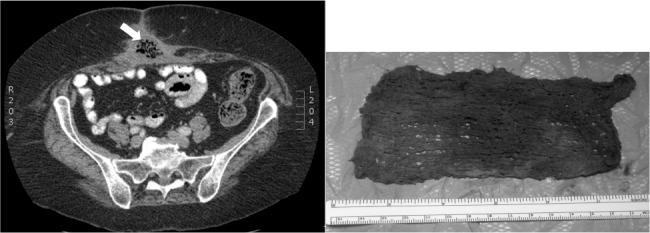Figure 1.

An obese patient developed a wound infection at the site of an incisional hernia repair performed 10 weeks previously. This was treated in the community with negative pressure wound therapy (NPWT). Foul-smelling discharging pus persisted from a wound sinus after cessation of NPWT. Computed tomography (left) showed an area of inflammation with multiple air pockets (arrow) in the subcutaneous tissue of the anterior abdominal wall. Wound exploration under general anaesthesia revealed a sponge (without a radiopaque marker) used for the NPWT dressings in the subcutaneous fat (right). The sponge was removed, the wound healed by secondary intention and the patient made an uneventful recovery.
